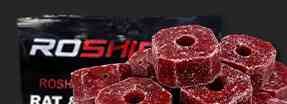Mice are usually more of a problem in autumn and winter. However, they can be around all year depending on food sources. The first step to control mice is to inspect the area and identify the location of their habitat. This is critical to understand the infestation and to plan their control.
Inspect for food sources and remove. Mice do not require much food to survive, and misunderstanding their food source can be easily done. Food sources can range from a few spilt crumbs around a toaster to leftovers in a dog bowl. Mice will populate depending on the amount of food available. A large population of mice is a good sign that food is readily available.
Removal of the harbourage and food source should move the mice on to new locations. However, in most cases, mice will still stay active and additional treatment to control them will need to be undertaken.
Looking into how mice gain access to buildings is key to understanding both the infestation and future-proofing. Mice can access small holes, often less than 6mm, so it’s virtually impossible to prove a building against mice totally but filling in accessible holes will help prevent long-term infestations. We generally recommend that you do not undertake proofing works until the end of the treatment.
Certain areas of the country such as London, Birmingham, and Brighton have tough control mice. They are normally baited and trap shy and can be a challenge to both amateur and professional users. Control can be undertaken with pre-baiting the area with food as well as persistence.
Traps or Rodenticides
Firstly, decide whether to use traps or rodenticide to eradicate your mouse infestation. Both methods are effective so that it may come down to preference.
Trap Option
Trapping is generally not as easy as you would expect. Infestations can be controlled but can take time.
One of the advantages of trapping is that this is a safer option for treatments around children, pets and non-target animals, subject to obvious control measures such as placing them in voids or trap boxes. The kill is quick, and the body can be removed for disposal fast and easily.
As traps can be placed directly into voids, such as under floors, behind kitchen foot plinths or attic areas, this means that you do not always require boxes that mice may initially be shy to enter. This can result in faster treatment, especially in small infestations.
Boxes are also a key part of mouse treatments if baiting in open areas such as kitchens or where children or pets have a risk of coming into contact with the traps. Boxes can prevent mice from entering initially, and it is normal for acceptance for periods longer than 1 week. If you cannot control the trap environment around the trap, we certainly suggest using a trap box.
Every infestation varies in size, and the number of mouse traps required for control will differ. As a guide, we recommend 6 single mouse traps or 2 trap box kits for average treatment.
After the mouse’s successful capture, the body must be removed and disposed of. Leaving a mouse in a trap for a long period will result in others avoiding the traps.
Poison Option
When no alternatives are available, our recommendation is to use rodenticide poison bait for fast and professional control. These options come with significant risks that must be understood to prevent unintentional harm to non-target animals, children, and users.
Rodenticide is a highly effective method of control. However, correct placement should be understood to gain acceptance. A typical baiting area would be near burrows, feeding areas or within voids frequently used by mice.
Existing food sources must be fully understood and removed; otherwise, you may find that you are competing against alternative food sources and not gaining the full results as expected.
It is a legal requirement that all amateur rodenticide bait must be used within tamper-resistant bait stations. This includes areas that are away from non-target animals such as an attic space or other enclosed voids.
An essential part of rodenticide baiting is the removal and correct disposal of any carcasses. Twice daily inspections of the area should be undertaken to search the treatment area and any bodies found should be double-bagged and disposed of in your general waste. If you are a company, you may have to treat the waste as hazardous.
We produce a range of products based on the active ingredients difenacoum, bromadiolone and brodifacoum. These are the most widely used anticoagulants in rodenticides for both professional and amateur use. As a general rule, we recommend difenacoum for mice. Mouse poison is only permitted to be used internally by amateur users.





